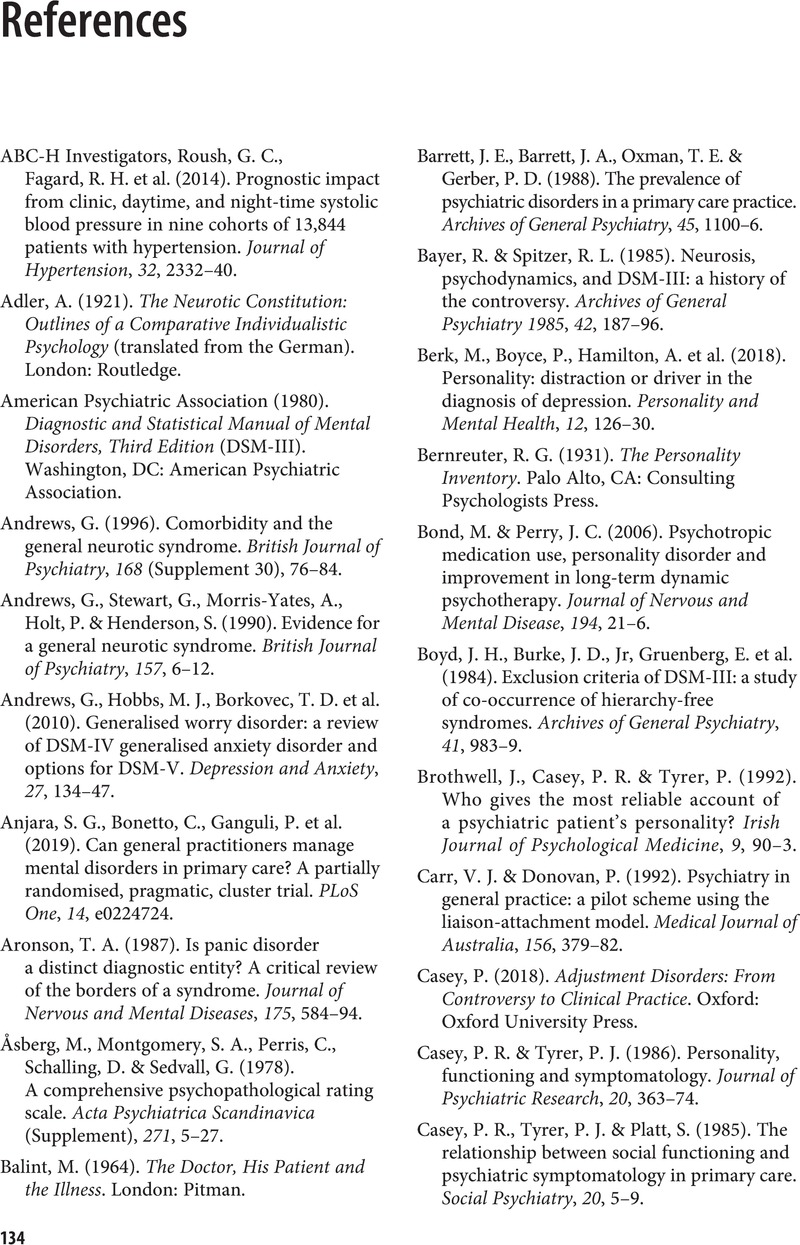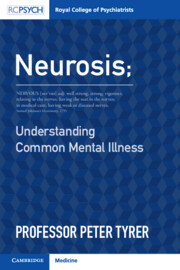Book contents
- Neurosis: Understanding Common Mental Illness
- Reviews
- Neurosis
- Copyright page
- Dedication
- Contents
- Figures
- Tables
- Foreword
- Acknowledgements
- Introduction
- Chapter 1 The General Neurotic Syndrome
- Chapter 2 DSM-III and the Generation of New Diagnoses
- Chapter 3 The Hypotheses of the Nottingham Study of Neurotic Disorder
- Chapter 4 Interpretation of the Results of the 1988 Lancet Randomised Trial
- Chapter 5 The Medium-Term Outcome of the General Neurotic Syndrome
- Chapter 6 The General Neurotic Syndrome at 12 Years
- Chapter 7 The Last Phase
- Chapter 8 Is the Notion of the General Neurotic Syndrome Useful?
- Appendix Personality Assessment Schedule (Tyrer & Alexander, 1979)
- References
- Index
- References
References
Published online by Cambridge University Press: 29 September 2022
- Neurosis: Understanding Common Mental Illness
- Reviews
- Neurosis
- Copyright page
- Dedication
- Contents
- Figures
- Tables
- Foreword
- Acknowledgements
- Introduction
- Chapter 1 The General Neurotic Syndrome
- Chapter 2 DSM-III and the Generation of New Diagnoses
- Chapter 3 The Hypotheses of the Nottingham Study of Neurotic Disorder
- Chapter 4 Interpretation of the Results of the 1988 Lancet Randomised Trial
- Chapter 5 The Medium-Term Outcome of the General Neurotic Syndrome
- Chapter 6 The General Neurotic Syndrome at 12 Years
- Chapter 7 The Last Phase
- Chapter 8 Is the Notion of the General Neurotic Syndrome Useful?
- Appendix Personality Assessment Schedule (Tyrer & Alexander, 1979)
- References
- Index
- References
Summary

Information
- Type
- Chapter
- Information
- NeurosisUnderstanding Common Mental Illness, pp. 134 - 140Publisher: Cambridge University PressPrint publication year: 2022
